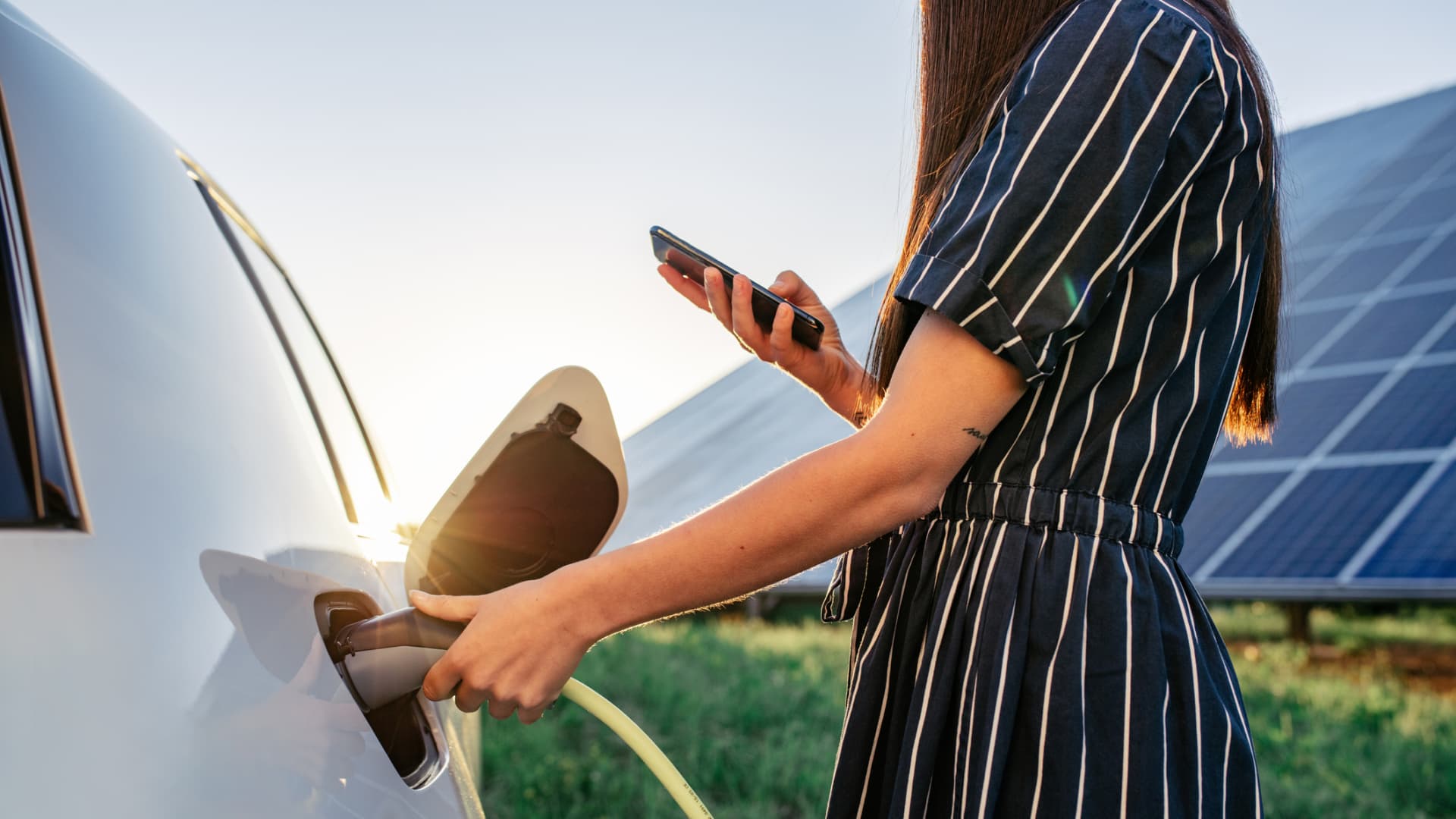With electric vehicle prices declining amid a glut of unsold inventory on dealer’s lots, you should be able to find a bargain on a zero-emission car in 2024.
That’s because of supply and demand: Even with enticing federal and state tax credits worth thousands of dollars, consumer demand for EVs has simply not kept up with the pace of production.
To stoke demand, automakers have slashed prices while offering generous lease terms or cash rebates in recent months. Tesla — the only carmaker with a profitable EV business — cut the prices on some of its models and trims by more than 20% in the last year alone.
It’s a similar story with used EVs. The average price on a used EV was 33.7% cheaper in Oct. 2023 when compared to Oct. 2022, according to a recent study by iSeeCars.
The trend is expected to continue, too, with “more incentives, more discounting” in 2024, according to a Cox Automotive forecast.
Why aren’t people buying EVs?
They are. In fact, the share of vehicles that are electric or hybrid has grown from 9% in 2021 to 16% through most of 2023, according to data by Wards Intelligence.
The problem for carmakers is that “product availability has grown exponentially, while consumer acceptance has grown in a more linear fashion,” according to a Cox Automotive analysis published in October.
With the Biden administration proposing emission rules that would ensure that up to two-thirds of all vehicles sold in the U.S. would be all-electric by 2032, auto manufacturers have been ramping up production. That’s why the number of EV products is expected to double by 2027, per Cox Automotive.
Inventory is already starting to pile up. The average number of unsold EVs on dealers’ lots divided by expected daily sales has grown to a 114-day surplus through November, which is nearly double what it was a year ago.
At the same time, consumers are showing a reluctance to transition from gas-powered vehicles to fully electric cars.
The biggest reason is cost, as EVs and hybrids tend to be more expensive than regular vehicles.
Almost half of consumers say that EV and hybrid costs are too high, according to a recent survey published by S&P Global Mobility. That’s followed by concerns about the availability of charging stations, which are nowhere near as ubiquitous as gas stations. Whether those concerns are lessened by cheaper EV costs remains to be seen.
What’s new about the federal tax credits in 2024?
Starting Jan. 1, car buyers will be able to claim a federal tax credit worth up to $7,500 off the sticker price of a qualifying EV or plug-in hybrid at the dealership, rather than having to wait months to claim the rebate in their tax returns.
Likewise, buyers of used EVs and plug-in hybrids will qualify for a federal tax credit at the point of sale. The credit is worth 30% of the price of the vehicle, up to a maximum of $4,000.
With the instant rebate, buyers won’t have to potentially set aside an extra $7,500 before they go shopping for an EV.
“A year ago, the EV premium was more than 30%. Today, it’s less than 10%.”
Stephanie Valdez-Streaty
Director of Strategic Planning at Cox Automotive
What’s more, nearly half of the U.S. states offer additional tax credits worth up to $7,500, according to the Tax Foundation.
These federal and state credits, when combined with existing discounts and generous lease agreements, will ensure that the price of many EVs will be on par with similar gas-powered vehicles in 2024.
“Newer products and higher discounts have brought down average EV prices, even before potential tax incentives,” says Stephanie Valdez-Streaty, director of strategic planning at Cox Automotive, in a recent report. “A year ago, the EV premium was more than 30%. Today, it’s less than 10%.”
Qualifying for the federal credit is complicated, however, as it’s based on whether parts of the vehicle are U.S.-made, your income and or whether you’ve claimed the credit before.
That means that not all EVs or hybrids will qualify for the credit, while others might only qualify for a partial credit. Adding to the confusion, the Internal Revenue Service has yet to publish a comprehensive list of which EVs or hybrids qualify, and what the credit amount will be.
In lieu of a published list, the IRS is directing buyers to the FuelEconomy.gov website, which has the most up-to-date information on which models qualify for the credit. To avoid any confusion, you’ll want to use this tool and check whether a given EV or hybrid qualifies for a tax credit before you buy it.
Check out: New rules may make it easier to knock up to $7,500 off the price off an EV—here’s how to qualify
DON’T MISS: Want to be smarter and more successful with your money, work & life? Sign up for our new newsletter!
Get CNBC’s free Warren Buffett Guide to Investing, which distills the billionaire’s No. 1 best piece of advice for regular investors, do’s and don’ts, and three key investing principles into a clear and simple guidebook.


